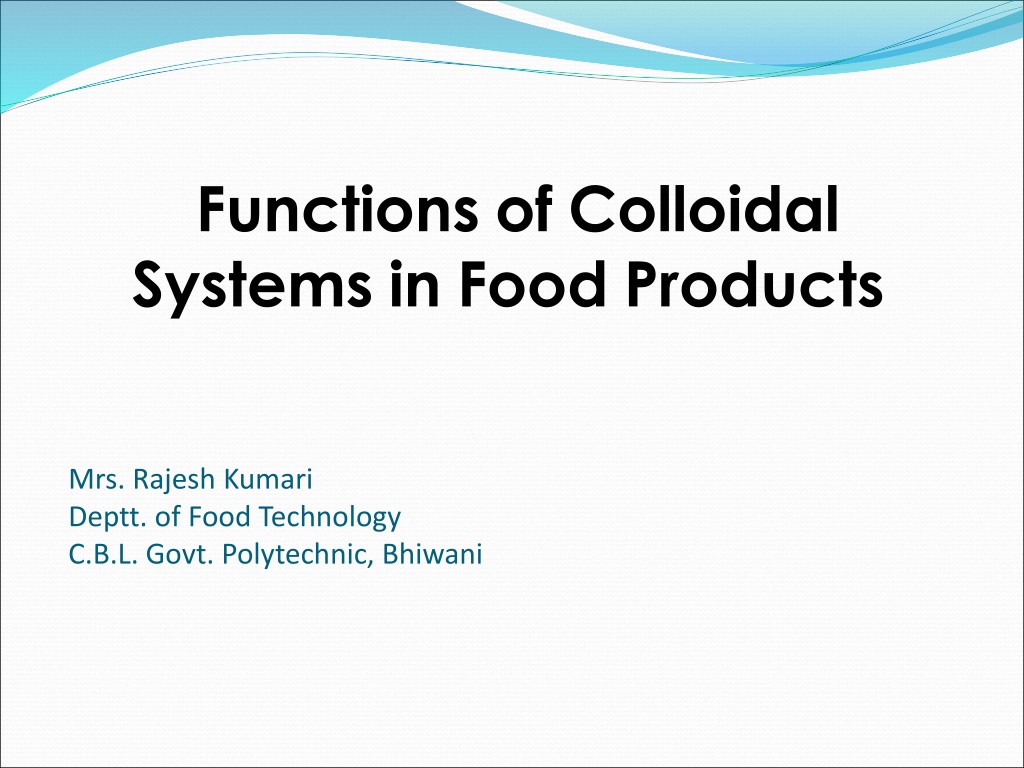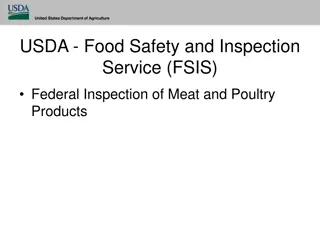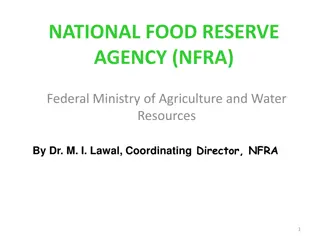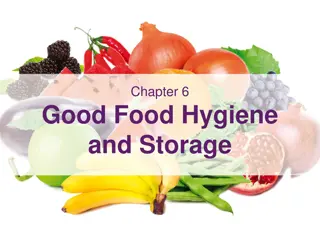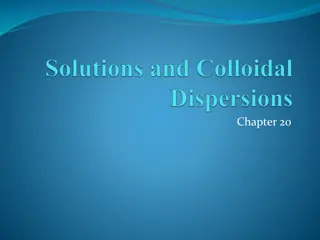Colloidal Systems in Food Products
Colloidal systems play a crucial role in providing structure, texture, and mouthfeel to various food products such as jam, ice cream, and mayonnaise. They are formed when one substance disperses through another without forming a solution, resulting in various types of colloids like gels, sols, emulsions, and foams. These systems are essential for the stability and overall quality of food products but can become unstable under certain conditions like temperature changes. Sol-gel transformations are common in colloidal systems, impacting the final texture of the food product.
Download Presentation

Please find below an Image/Link to download the presentation.
The content on the website is provided AS IS for your information and personal use only. It may not be sold, licensed, or shared on other websites without obtaining consent from the author.If you encounter any issues during the download, it is possible that the publisher has removed the file from their server.
You are allowed to download the files provided on this website for personal or commercial use, subject to the condition that they are used lawfully. All files are the property of their respective owners.
The content on the website is provided AS IS for your information and personal use only. It may not be sold, licensed, or shared on other websites without obtaining consent from the author.
E N D
Presentation Transcript
Functions of Colloidal Systems in Food Products Mrs. Rajesh Kumari Deptt. of Food Technology C.B.L. Govt. Polytechnic, Bhiwani
Learning objectives To define colloidal systems. To explain the difference between a sol and a gel. To understand how emulsions are formed. To define and recognise examples of foams.
What are colloidal systems? Colloidal systems give structure, texture and mouthfeel to many different products, for example: jam ice cream mayonnaise The functions of colloidal systems can be used in a variety of ways in order to produce food products.
What are colloidal systems? Colloids are formed when one substance is dispersed through another, but does not combine to form a solution. There are many types of colloidal systems depending on the state of the two substances mixed together. Gels, sols, foams (e.g. egg white foam) and emulsions (e.g. butter) are all types of colloids. The substance which is dispersed is known as the disperse phase and is suspended in the continuous phase. Egg white foam is an example of this.Air bubbles (disperse phase) are trapped in the egg white (continuous phase) resulting in a foam.
Functions of colloidal systems in food products Most colloids are stable, but the two phases may separate over a period of time because of an increase in temperature or by physical force. They may also become unstable when frozen or heated, especially if they contain an emulsion of fat and water.
Main types of colloidal system Disperse phase Continuous phase System Product Uncooked custard, unset jelly Jelly, jam, blancmange Sol Solid Liquid Gel Liquid Solid Mayonnaise, milk Emulsion Liquid Liquid Solid emulsion Foam Butter, margarine Liquid Solid Whipped cream, whisked egg white Meringue, bread, cake, ice cream Gas Liquid Solid foam Gas Solid
Sols and gels Sols and gels are both liquid loving (lyophilic) colloids. A sol is a liquid colloid or mixture in which solid particles are dispersed in a liquid phase. The disperse phase is attracted to molecules of the continuous phase. Sometimes the mixture needs to be heated and stirred. When this solution cools, the sol changes into a gel, which resembles a solid rather than a liquid. protein used in the formation of a sol or gel. Both and starch can be
Sols and gels When a jelly is made, gelatine is dispersed into a liquid and heated to form a sol. As the sol cools, protein molecules unwind forming a network that traps water and forms a gel. If cornflour is mixed with water and heated, the starch granules absorb water until they rupture, the starch then disperses in the water and the mixture becomes more viscous and forms a gel on cooling.
Other types of gel Other types of gel are formed with pectin and agar. Pectin, a form of carbohydrate found in fruits, is used in the production of jam to help it set. However, for it to gel there must be at least 50% sugar and conditions should be acidic. Agar is a polysaccharide extracted from seaweed which is capable of forming gels. If a gel is allowed to stand for a time, it starts to weep . This loss of liquid is known as syneresis.
Emulsions When water and oil are shaken together, they form an emulsion. This emulsion is unstable. If left to stand, the oil will form a separate layer on top of the water, e.g. traditional French dressing. The two liquids are immiscible (they will not mix together). A stable emulsion is formed when two immiscible liquids are held stable by a third substance, called an emulsifying agent.
Emulsions An emulsion may be oil-in-water (o/w) in which case small oil droplets are dispersed through water, e.g. milk, or water-in-oil (w/o) in which case small water droplets are dispersed through oil, e.g. butter.
Emulsions An emulsifying agent is made up of two parts. One is hydrophilic (water loving) and the other is hydrophobic (water hating). The emulsifier holds the disperse phase within the continuous phase. results in the emulsion becoming stable. This
Emulsions Mayonnaise is an example of a stable emulsion of oil and vinegar, when egg yolk (lecithin) may be used as an emulsifying agent. Stabilisers are often added to emulsions to increase the viscosity of the product. improve the stability of the emulsion, as over time the emulsion may separate. Stabilisers also increase shelf life, E461 methylcellulose, used in low fat spreads. These help
Foams Foams are composed of small bubbles of gas (usually air) dispersed in a liquid, e.g. egg white foam. white is whisked, air bubbles are incorporated. As liquid egg The mechanical action causes albumen proteins to unfold and form a network, trapping the air. If egg white is heated, protein coagulates and moisture is driven off. This forms a solid foam, e.g. a meringue. Ice cream, bread and cake are other examples of solid foams.
Review of the learning objectives To define colloidal systems. To explain the difference between a sol and a gel. To understand how emulsions are formed. To define and recognise examples of foams.
